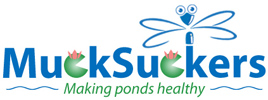Pond Health Resources
Resources for a clean & healthy pond!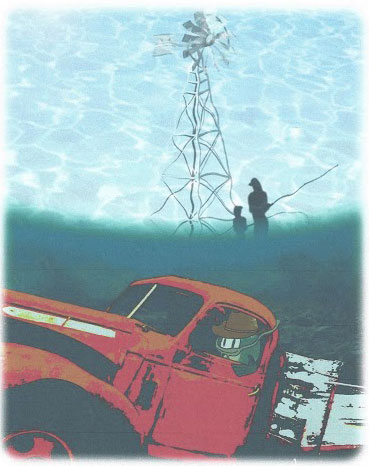
The Story Of Old Moe, The Biggest Catfish In Ohio
The Story of Old Moe as told by Ron Becker “There I was” That’s how all good stories should be started. This story starts out approximately 20 years ago when we built our family pond. We did everything in the construction of our pond to make it the best possible pond for fishing that we could. This included a wind powered aeration windmill from Becker Windmills. We also put structures in the pond to improve fish habitat. This included an old truck that the fish could go in, under, and around, right next to the air diffuser from the windmill. Now about Old Moe, Old Moe is probably the biggest catfish in the state of Ohio. A few people have hooked Old Moe, but no one has ever landed him. Once in awhile people will see him and their jaws just drop open in amazement. So one evening my son K.C. and I were fishing and we were catching a few when all of a sudden I got a strike and when I set the hook it felt like I had a hold of a huge log. Then it started to move and I knew it had to be Old Moe. No other fish could feel that big. I continued to wage war with him for probably a half hour or so when he started to surface slowly. The huge fish slowly came into view and kind of rolled up on his side like he was just flat tuckered out and I thought that the war was won. As I was bending over to try to hoist him out of the water I got a little over confident and yelled to K.C. on the other end of the pond “K.C., I caught Old Moe”. Just then Old Moe must have gotten a second...

Pond cleaning at Chase Bank
MuckSuckers was tasked with cleaning sediment from the Chase Bank Coporate Office building pond in Columbus Ohio. This 1/3 acre pond was surrounded on three sides by office buildings and the fourth side by beautiful landscaping. Employees of Chase enjoy this courtyard pond and the garden's walking path. With years of organic sediment buildup, it was becoming increasingly difficult to keep the pond aesthetically pleasing. MuckSuckers removed the sediment from the bottom of the pond, without damaging the landscaping or ecosystem. Now Chase can enjoy their clean, revitalized pond for years to come!
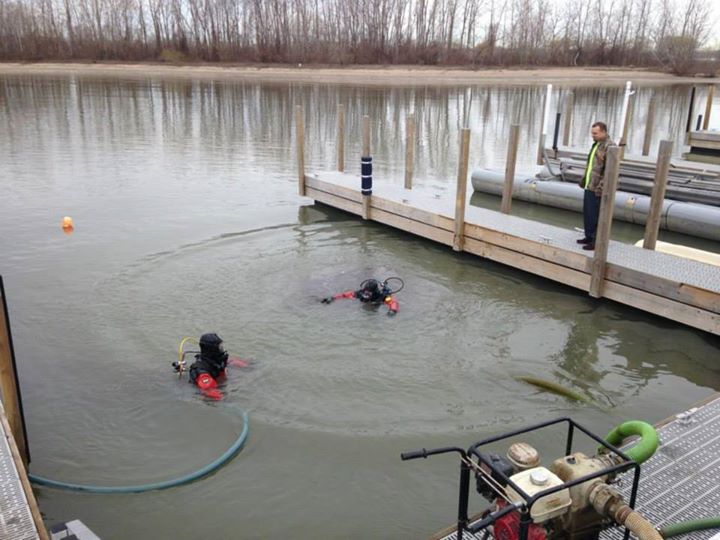
Lake Erie Boat Dock Cleaning
MuckSuckers kicked off the Dive Season at Point Retreat in Sandusky, Ohio in April. We pumped out 2-3 feet of sediment from around boat docks. The water temperature was 47 degrees!
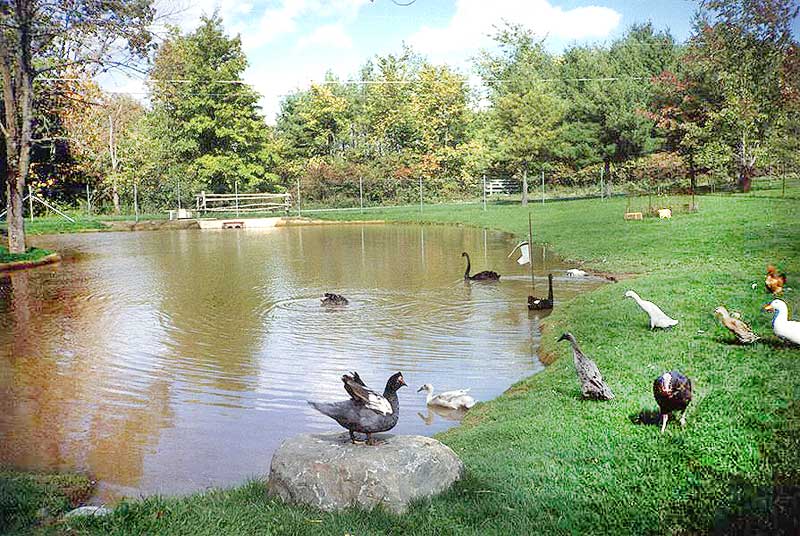
The best (and environmentally friendly) way to dredge a pond
The conventional way of dredging a pond is a very messy task. This usually involves first draining the pond, then allowing time for the sediment to dry. All wildlife is either killed off or relocated during this aspect of the operation. Heavy equipment is then used to scrape the bottom of the pond. Dump trucks then haul away the sloppy sludge material. This process not only destroys the pond’s wildlife but also the entire landscape around the pond. After the conventional dredging is done, all banks will then need to be restored, trees and grass or other landscaping and will need to be replaced or reseeded. In many cases conventional dredging will not work. Sometimes ponds are “spring fed” and never dry out completely. Other ponds are completely surrounded by houses, trees, power lines, etc, leaving pond owners no option to use heavy equipment. Another option to pond dredging is the Sediment Removal Solutions of Ohio approach. SRS uses scuba divers and high-volume suction pumps to suction the sediment out without the harmful repercussions of conventional dredging. The sediment is simply pumped to another location, either allowed to be absorbed into the surrounding landscape or contained within a geotextile container. This container passively filters out the water allowing the sediment to completely dry. This material can be hauled away usually at a fraction of the cost of hauling wet material. The SRS of Ohio approach to restoring ponds is environmentally friendly,...
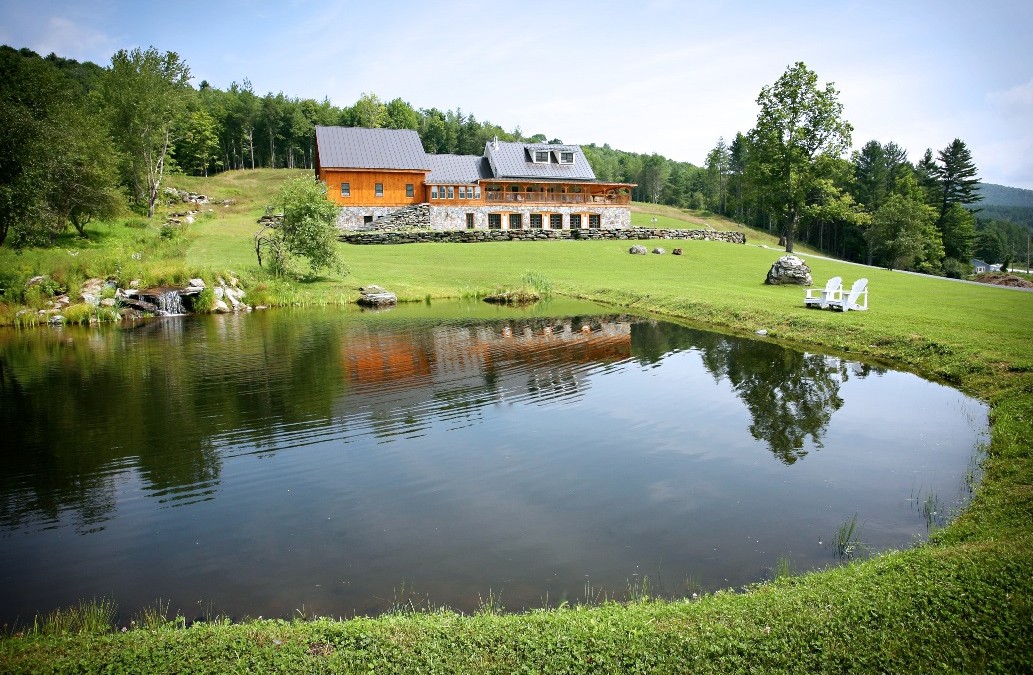
How to dredge – but not destroy – a pond
Dredging a pond is a damaging process. All water and all wildlife must be removed before the heavy equipment is brought in - and heavy equipment means felled trees and tattered shorelines. Essentially, dredging is like saying goodbye to (or at best relocating) your wildlife, and then rebuilding the landscape after all the trucks have left the site. Surely, it’s a last-gasp choice to clean or save a pond. Surely, there’s a better way. There is. Sediment Removal Solutions of Ohio (SRS) employs scuba divers to avoid the wear and tear of conventional dredging. The divers use high volume suction pumps to remove the sediment from the bottom of the pond. The sediment is sent to another location, where it can be contained in a geotextile container, or simply absorbed into the land. (A geotextile container will allow the water to slowly drain away, so that the remaining sediment can be hauled away as a much lighter, and much more inexpensive load.) With this system, no wildlife needs to be relocated. It leaves the surrounding environment virtually unscathed. The results are fantastic, too: with proper upkeep, a cleaning of this sort should last from 15-20 years. Here are some added benefits, from the main SRS website: The restoration of the natural bottom without disturbing existing aquatic life in your pond. Cleaner water and a healthier ecosystem without damage to the existing landscape. A dramatic reduction of weed and algae problems. An expanded living space for your fish...
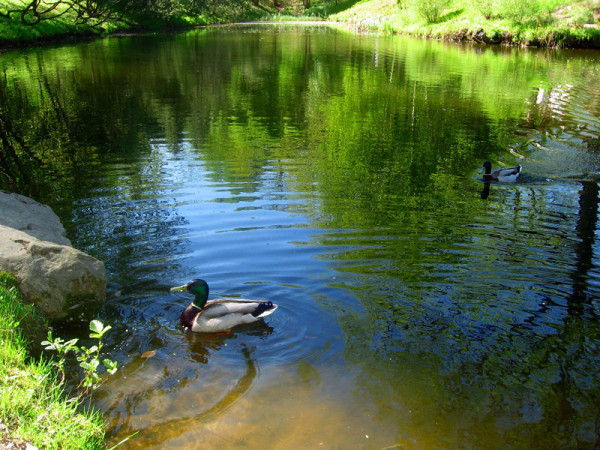
Pond stratification, or how a sick pond can become healthy
Without proper aeration, pond water can become stratified, creating a "sick", unhealthy pond. Think of a pond in layers. Warm water is less dense, therefore it will sit on top of colder, denser, deeper water. This stratification of water into layers is more common and pronounced in the summer when surface temperatures are greater. The warm, top layer is called the epilimnion. Then there's the middle layer called the metalimnion. This is also referred to as a "thermocline". The thermocline is the transition layer between the warmer surface layer and the colder deep water layer. The cold, bottom layer is the hypolimnion. As summer wears on, oxygen in the lower hypolimnion layer is depleted by organisms there. As oxygen is depleted, fish and other aerobic organisms move to the other layers, go dormant or die off. Introducing aeration to a pond changes everything. A bottom aeration system creates a vertical current. Bottom aeration uses the rising force of millions of small bubbles to turn the pond water over. This allows all levels of the pond to carry dissolved oxygen. The water on the bottom level moves up throughout the pond. This eliminates the thermal stratification or separation of water layers. Oxygen levels increase throughout the pond which expands the living space and promotes the natural breakdown of organic material at the bottom of the pond. We can consult with you on proper aeration and other solutions for your pond. Contact us today with any questions you...
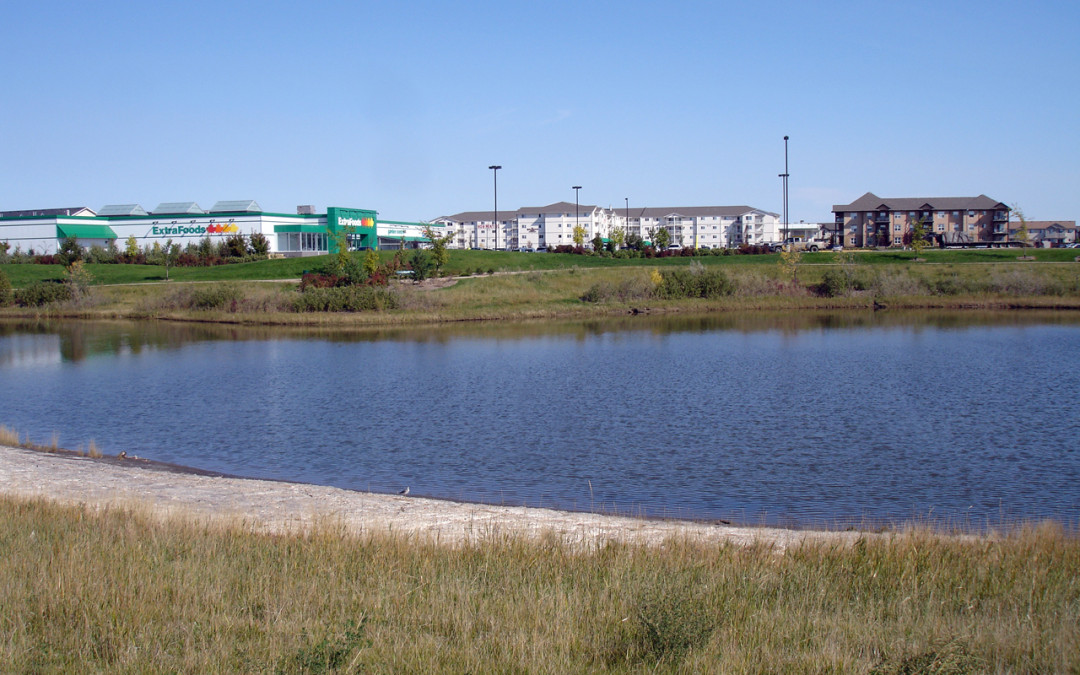
What are retention ponds and detention ponds?
Retention ponds are basins constructed for holding water. Typically this is water that is runoff from higher elevation. Often they are built near areas of development such as larger buildings or parking lots. You've probably seen retention ponds without knowing what their real purpose is. They can be found near places like a Walmart or Menards. Think of somewhere with a huge parking lot - if it was built recently, laws probably required that the owners install a retention pond. They can also be found near some residential areas (at least ones built after the mid-1980s). Retention ponds are built to control water runoff and to help limit flooding. The reason they're needed near parking lots, buildings and the like is because of the huge square footage of surface area for water to hit and run off of. If it was open land, the water would be allowed to either seep into the water table or run into a nearby stream, river or other tributary. Think about it - without a retention pond, where would the water go? It would likely pour into local sewer systems, potentially filling them up and overflowing them. Instead of flooding, the water can flow into the lower elevation retention pond. Retention ponds are just one type of water retention basin. They are named so because they retain water, or at least they typically hold water in them. They usually also have an overflow pipe so that the water level doesn't get too high. There's another version called a "detention pond" or "detention...
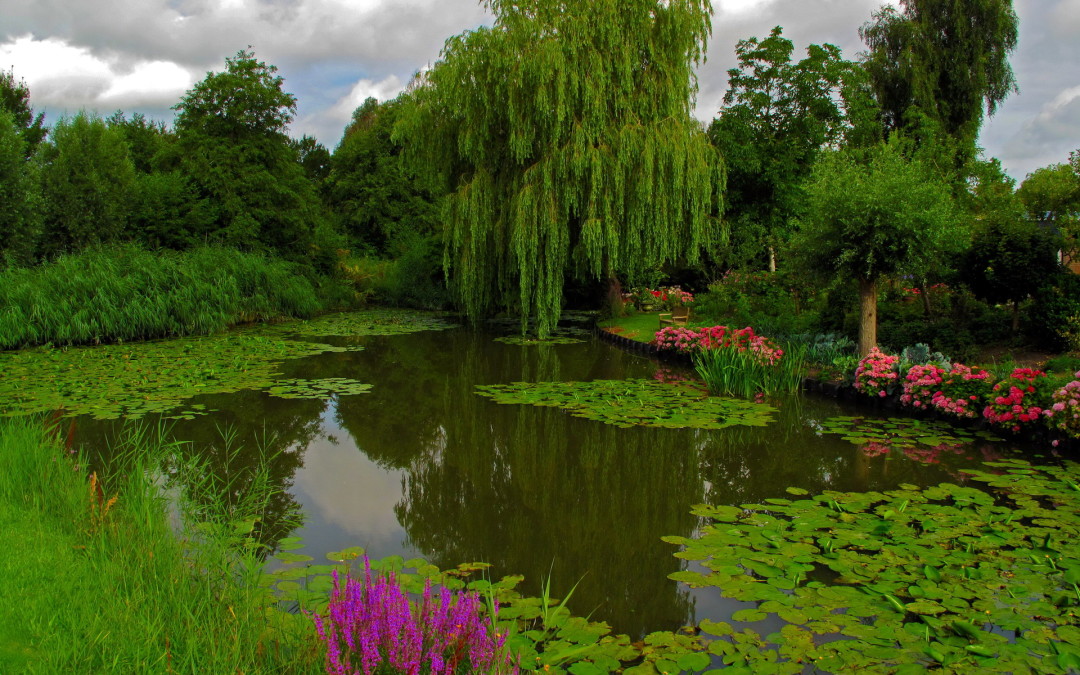
Why our pond cleaning process is environmentally friendly
There's a lot that goes into cleaning a pond. Traditionally, and still today, most companies use dredging to clean ponds. Dredging is the act of removing sediment and muck (decaying leaves, algae and biomass) from the bottom of a body of water. The muck is harmful because it releases toxins and an overdose of nutrients, which in turn grows more algae and kills aquatic life. Our method, on the other hand, doesn't rely on excavation of your pond. Instead our highly skilled divers go down into your pond and vacuum out the sediment. It is a less expensive method, less invasive and also restores a healthy balance to the pond. The traditional method of pond cleaning, mechanical dredging, is very harmful to the ecosystem of a pond. In dry dredging, the pond must be drained completely before being excavated, which usually means killing off the aquatic life. In wet dredging, sediment and muck is dispersed throughout the water and releases buried toxins, which ends up killing the aquatic life as well. On top of that, the waste must be trucked away, causing damage to the surrounding area and letting muddy water drain out along the way. Additionally, getting the heavy equipment where it needs to be can be tricky, costly and can damage the environment. Our sediment removal system is much more efficient and environmentally friendly. We use suction pumps to vacuum up sediment and muck from the bottom of the pond, without disturbing the aquatic life. This way, your pond is cleaned of...
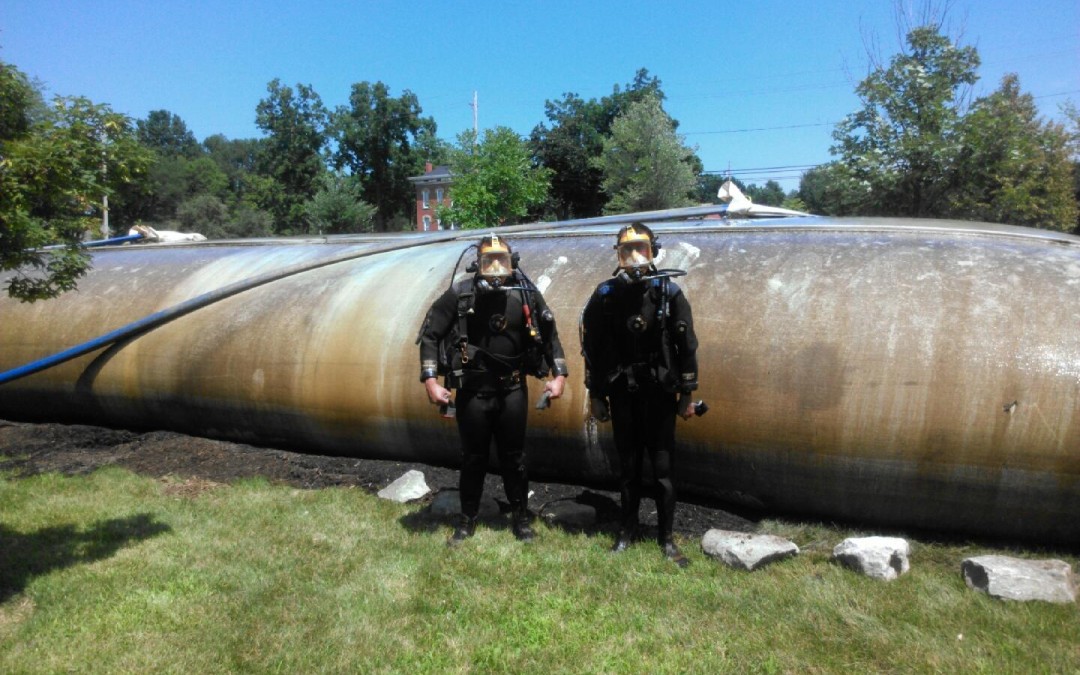
Geotextile containers: how we use them to help clean your pond
Geotextile containers are what we use when vacuuming the sediment from your pond. The muck from the bottom of the pond is sucked up and discharged into them. They're also sometimes called de-watering bags, geotextile tubes or silt containers. The geotextile fabric they're made of passively filters out the water. The fabric will not allow sediment through or allow rain water to seep in. This allows the sediment to completely dry in place. The sediment can then be used for landscaping projects to help beautify the area. It can be mixed with compost to enrich the soil. Alternately the sediment can be graded where it is and have grass seeded in it. For this reason we recommend putting much thought into the placement of the geotextile tubes. Sediment Removal Solutions of Ohio can assist with this. We have a PDF that should help you with placement and finding the right grade in preparation of receiving the geotextile container. Without using these containers, there is a huge cost in hauling away the wet sludge. Using geotextile containers also gives you other options so that you don't have to haul away the material. But even if you decide to haul it away, hauling costs are greatly reduced, simply by removing all the water weight. They are extremely effective and are a huge part of our process. They will help you reduce hauling costs and/or help you to enrich the landscape surrounding your pond. Do you have questions about the process? We're here to help. Call us (1-877-772-MUCK)...
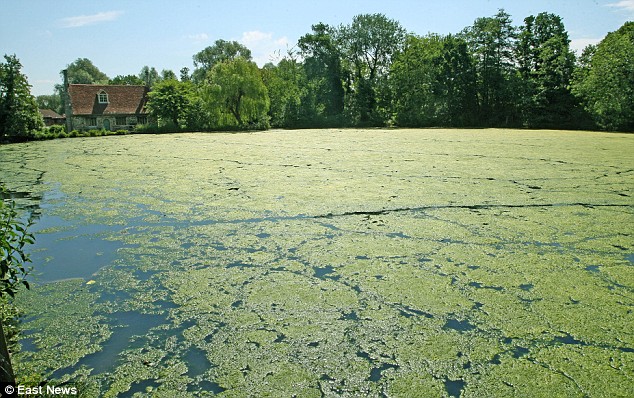
What is filamentous algae and why is it dangerous to my pond?
Filamentous algae sounds nasty and looks nasty too. Filamentous algae is the type of moss you see on some ponds that has long, intertwined threads or filaments. The filaments can grow together to form a mat that seems like an icky, green wet wool or a mat of human hair. Most people would recognize filamentous algae better by the simpler terms "pond moss" or "pond scum". It starts out growing on the bottom of your pond in shallow water or attached to structures in the water like docks, rocks or plants. Pond moss offers no real value to recreational ponds, and instead can be very hazardous, toxic and a yucky, ugly nuisance to swimmers and sport fishing. It cannot be directly used/eaten by aquatic animals. The best thing we can say about it is that in some non-recreational lakes, the algae can be somewhat beneficial but only when it's kept at a low level. Pond moss can make for decent cover for aquatic animals such as snails, some insects and scuds. (Scuds, aside from being popularized in the 1st gulf war as short-range missiles, are also a tiny form of crustacean that look similar to shrimp.) Typically however, filamentous algae can be a huge detriment to the life of a pond. It reproduces at an amazing rate; you might not see any and then all of a sudden have a huge algae bloom. As the algae grows and grows it gives off oxygen. The oxygen gets trapped in the weave of intertwined threads of algae and whole bunches of it rise to the surface. Algae has a short "shelf...
Our Clients Include



